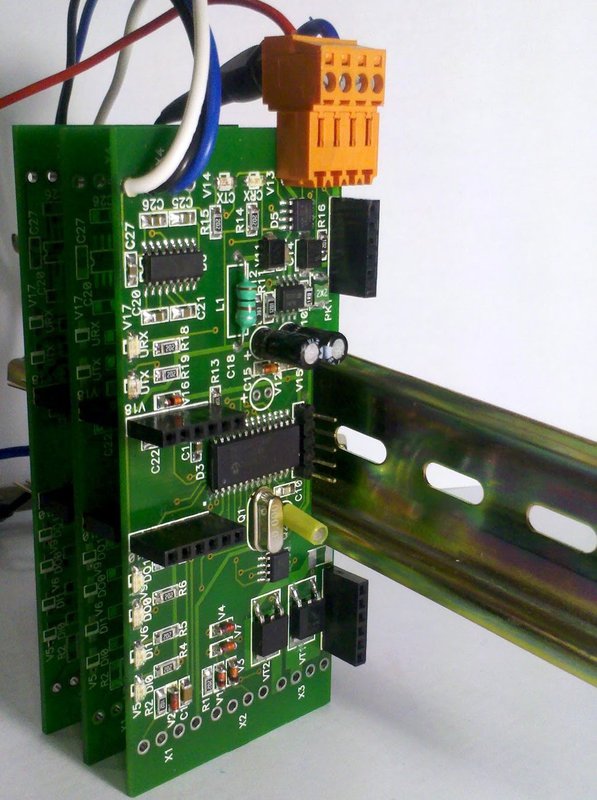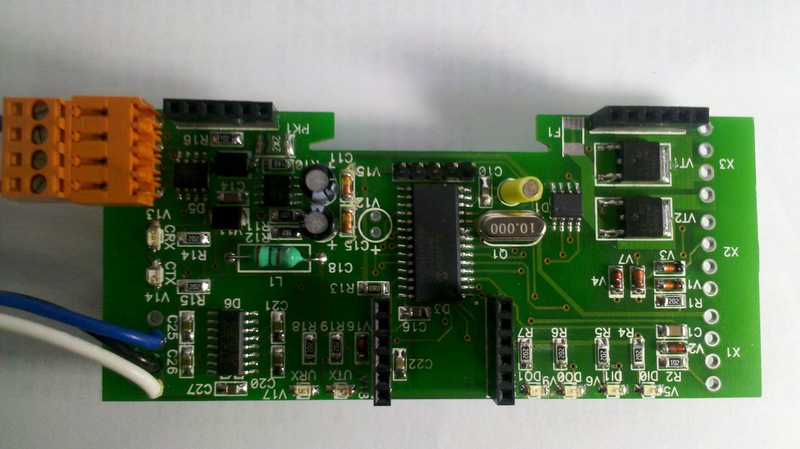Home Automation Kit - how do you see it?
Good day Habra residents!
I decided to share with you one idea that my colleague and I have been trying to implement for some time.

')
So. Little prehistory. Our organization is engaged in industrial automation. For a long time, we have developed a set of software and hardware to solve specific industrial automation tasks for one large corporate customer. And so, when in general, we implemented all our ideas, and this complex even acquired a finished look and beauty, was tested in combat conditions, the customer suddenly decided that only “standard software and hardware of well-known global manufacturers should be used in its structure ". Development lay on the shelf. So we decided to give her (well, of course, not quite her) new life in the form of Open Source, Open Hardware project for home automation.
It is planned that this will be a set of devices, each of which will be designed to solve a certain range of tasks and will have a unique set of peripherals that can be best suited for solving these problems. These devices can be networked using proprietary protocols across the top of the CAN and 802.15.4 interfaces. They will have an RS 232 (possibly usb cp2101) port for connecting to PCs, routers and any other smart devices that support USB host or RS232. All interfaces (communications and I / O) will be serviced at the level of the native code written to the processor (PIC24) and the source code of which will be provided within the project, and the application program will be created in the simplest “C” similar programming language that will be compiled bytes the stack machine code, and will be executed on the virtual machine over the main firmware.
The simplest program:
or so:
The main criteria for developing a line of devices are:
simplicity of repeatability
low cost
ease of installation and enclosure
easy data exchange between devices
ease of creating applications
ease of learning
At the moment, developed a prototype -

with the following specification:
12V power supply
two PWM ports with 12V 30A power switches to control any 12V load
two discrete inputs with a wide range of input voltages
one analog input
RTC
RS232
CAN
ability to install the assembly MRF24J40MA.
One of the main features of all modules will be a standard size, providing for easy installation of modules on a DIN rail in standard boxes for electrical installation, as well as a unified number and location of detachable terminal blocks.
Development of software for this module, which should be the base for the rest of the line in the process. In the future we plan to develop new devices that may have a more specialized purpose.
In the near future the site will be opened, the schemes and the first versions of the software will be posted.
So to the respected community, please, express your wishes and scenarios for the use of such a set of equipment. Based on your wishes, tutorials will be created and new devices developed as part of the project.
Sample scripts:
Pumping water from the tank (drain pit) by the presence of only one water level signal (full tank):
Upon the appearance of a signal (float discrete sensor), the pump is switched on for a while sufficient to pump a certain volume of capacity, but not sufficient to pump out all the water (protection of the pump from dry running).
Managing the kettle by the presence sensor and time of day: if a person appeared in the kitchen at a specified time interval (discrete presence sensor), turn on the kettle :).
Sophisticated control of lighting devices and the implementation of lighting effects.
I decided to share with you one idea that my colleague and I have been trying to implement for some time.

')
So. Little prehistory. Our organization is engaged in industrial automation. For a long time, we have developed a set of software and hardware to solve specific industrial automation tasks for one large corporate customer. And so, when in general, we implemented all our ideas, and this complex even acquired a finished look and beauty, was tested in combat conditions, the customer suddenly decided that only “standard software and hardware of well-known global manufacturers should be used in its structure ". Development lay on the shelf. So we decided to give her (well, of course, not quite her) new life in the form of Open Source, Open Hardware project for home automation.
It is planned that this will be a set of devices, each of which will be designed to solve a certain range of tasks and will have a unique set of peripherals that can be best suited for solving these problems. These devices can be networked using proprietary protocols across the top of the CAN and 802.15.4 interfaces. They will have an RS 232 (possibly usb cp2101) port for connecting to PCs, routers and any other smart devices that support USB host or RS232. All interfaces (communications and I / O) will be serviced at the level of the native code written to the processor (PIC24) and the source code of which will be provided within the project, and the application program will be created in the simplest “C” similar programming language that will be compiled bytes the stack machine code, and will be executed on the virtual machine over the main firmware.
The simplest program:
TMRI0=!Y0; Y0=1?TMRO0; TMRI1=Y0; Y0=0?TMRO1; or so:
if(Y0) { Y0=0; } else { Y0=1; } The main criteria for developing a line of devices are:
simplicity of repeatability
low cost
ease of installation and enclosure
easy data exchange between devices
ease of creating applications
ease of learning
At the moment, developed a prototype -

with the following specification:
12V power supply
two PWM ports with 12V 30A power switches to control any 12V load
two discrete inputs with a wide range of input voltages
one analog input
RTC
RS232
CAN
ability to install the assembly MRF24J40MA.
One of the main features of all modules will be a standard size, providing for easy installation of modules on a DIN rail in standard boxes for electrical installation, as well as a unified number and location of detachable terminal blocks.
Development of software for this module, which should be the base for the rest of the line in the process. In the future we plan to develop new devices that may have a more specialized purpose.
In the near future the site will be opened, the schemes and the first versions of the software will be posted.
So to the respected community, please, express your wishes and scenarios for the use of such a set of equipment. Based on your wishes, tutorials will be created and new devices developed as part of the project.
Sample scripts:
Pumping water from the tank (drain pit) by the presence of only one water level signal (full tank):
Upon the appearance of a signal (float discrete sensor), the pump is switched on for a while sufficient to pump a certain volume of capacity, but not sufficient to pump out all the water (protection of the pump from dry running).
Managing the kettle by the presence sensor and time of day: if a person appeared in the kitchen at a specified time interval (discrete presence sensor), turn on the kettle :).
Sophisticated control of lighting devices and the implementation of lighting effects.
Source: https://habr.com/ru/post/134277/
All Articles